Apart but together How the Institute is responding to the pandemic
Pandemics, past and present
In 1960, when Jonas Salk founded his eponymous Institute, he was arguably the most famous scientist in the world for having developed the first safe and effective vaccine for a terrifyingly contagious viral disease called polio. At its peak, polio paralyzed or killed hundreds of thousands of people (primarily children) annually worldwide.
In 2020, humanity is facing another highly infectious viral disease, COVID-19, whose long- term effects are not yet known. Although polio and COVID-19 are caused by different viral species that affect different systems in the body, there is a chilling superficial similarity in the way both diseases can cause difficulty breathing. Indeed, it is easy to think of today’s ventilator as yesterday’s iron lung.
Polio, which is transmitted via fecal-oral routes, is, paradoxically, thought to have become a public health threat due to improvements in public sanitation in the early 20th century. Before sanitation improved, and polio was more widespread, most people encountered polio as babies, while they still had their mothers’ immune antibodies as protection against the virus. Once public sanitation cleaned up water and waste, children didn’t encounter the virus until they were older and no longer had their mothers’ protective antibodies. Older children (and some adults) whose immune systems had never previously encountered polio were immunologically vulnerable.
Like polio, COVID-19 exploits a vulnerability in the immune system’s armor: because the SARS-CoV-2 virus—the novel coronavirus that causes COVID-19—appeared in humans recently, our immune systems have no experience with the virus—and sometimes have difficulty fighting it.
“Long-term immunity, also called ‘immune memory,’ is a process by which we develop the ability to have protective immune responses later on that are targeted to pathogens that we have encountered before,” says Professor Susan Kaech, NOMIS Chair and director of Salk’s NOMIS Center for Immunobiology and Microbial Pathogenesis. “So our immune system learns from the first exposure, and the memory of the pathogen is then imprinted in our immune system in specialized cells, aptly named memory T and B cells. Those memory cells can persist for many years, sometimes an entire lifetime, and allow us to respond swiftly and robustly to clear out that same pathogen if encountered later on.”
Because SARS-CoV-2 is thought to be more infectious, and deadlier, than seasonal influenza, many people around the world are becoming critically ill and straining medical systems, which are not designed to handle so many additional patients simultaneously.
Thus, COVID-19 represents a perfect storm of threats, one that requires an unprecedented response. Immunologists are focused on several areas related to COVID-19, such as developing a protective vaccine or anti-viral drugs; understanding the difference in immune response between those who have severe illness versus mild illness; determining what is driving lung damage and death seen in some patients; and figuring out which types of memory cells generated against the virus are the most protective. This latter information could help generate immuno-therapies for severely infected patients until there is a vaccine, and will also help teach researchers which vaccines may be the most protective. Scientists around the globe have been racing to find solutions in a monumentally collaborative effort, while also maintaining social/physical distancing—a challenge for work that often needs to be conducted in close quarters in a lab.
During this public health crisis, the Salk Institute’s leadership and scientists have faced a conundrum: how to rapidly shut down all non-essential research as effectively as possible while minimizing loss of data and doing everything possible to assist with the unfolding public health crisis.
“We realized early on we needed to take swift action to minimize opportunities for viral transmission through the community, help that community stay connected, and safeguard valuable research materials and projects for the future,” says Professor Martin Hetzer, Salk’s VP/CSO. “Thanks to the flexibility and innovation of the entire Institute, staff and scientists alike, we were able to move quickly to protect the Salk community in the face of this growing pandemic.”
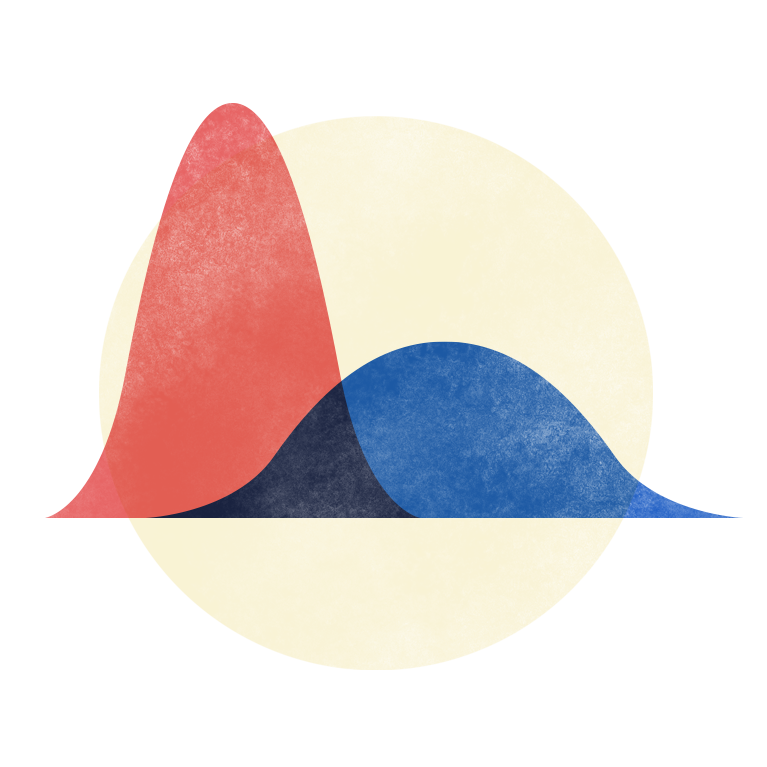
Even though it was a difficult decision [to potentially lose many hours of experimental research], helping to ‘flatten the curve’ of infections and hospitalizations was of the utmost importance.”
MARTIN HETZER
VP/CSO
An iconic campus goes into “maintenance mode”
Enacting a partial shutdown of a research institution is different from shutting down many other kinds of organizations. Many experiments that involve biological samples or plant and animal studies cannot simply be paused. The Institute’s 52 labs and approximately 1,200 scientists, students and staff sustain research projects that result in the publication of upwards of 300 papers per year in leading academic journals. Salk has critical cell lines, plants and animals that need a physical human presence to ensure their survival.
On Monday, March 2, 2020, Hetzer began meetings with the Institute’s Crisis Management Team (CMT)—a combination of faculty and administrators—to evaluate the emerging public health crisis and to make plans for how the Institute would respond.
“While some things like writing manuscripts and analyzing data can be achieved remotely,” says Professor Gerald Shadel, the Audrey Geisel Chair in Biomedical Science and a member of the CMT, “most science requires hands-on experiments and collaborations that cannot be achieved remotely. Secondly, there are many moving parts to a world-class scientific institute like Salk, in addition to the labs: scientific core facilities, animal resources, development, communications, safety, human resources, IT, security, facilities—the list goes on and on. Each decision has a butterfly effect on most, if not all, operations, making the task of reducing operations at the Institute as a whole very challenging.”
In addition to the gravitational pull of Salk’s research and daily operations, the Institute’s historically significant architecture typically draws 150 visitors to campus every day, many of them international tourists who come to witness one of the finest examples of modernist architecture in the world. But, as early indications of COVID-19’s rapid spread suggested that the public health crisis was likely to get much worse, the Institute closed the campus to visitors on March 4.
Next, the team started to plan for what would happen if the Institute had to close down. Time was of the essence; as each day passed, news of COVID-19 became grimmer and the possibility of shutting down the campus—and its experiments—looked more and more likely, even before official state shutdown orders.
By the time California Governor Gavin Newsom issued a stay-at-home order to residents on Thursday, March 19—the first state in the nation to do so in response to the COVID-19 pandemic—Salk, for several weeks, had already been preparing its temporary closure. The week of March 9, the Institute finalized processes for working from home; determined which staff would be considered essential for continued work on campus; and decided how to wind down laboratory research for the campus-wide “maintenance mode” of limited activity until more information around the threat of the pandemic—and how best to mitigate risk—became available.
“I’m grateful that we were ahead of the curve and responded fairly quickly,” Hetzer says. “At the time our taskforce convened, the situation was still evolving very rapidly, but we felt it was important to act with an abundance of caution to protect both visitors to Salk as well as the Salk community. Even though it was a difficult decision, helping to ‘flatten the curve’ of infections and hospitalizations was of the utmost importance.”
One of the greatest challenges in shutting down was evaluating which experiments could continue and which would have to be paused or terminated. Salk’s maintenance mode entailed operating at a minimal level to conserve resources, both in terms of personnel and of materials that could be affected by supply-chain disruptions. In some cases, cells can be frozen and later thawed to resume work, but in other cases, projects that are too costly in terms of resources must be discontinued. Due to a rigorous one-week evaluation process, the Institute was able to establish how resources could be channeled toward experiments that could not be paused without losing months or even years of work.
“Labs and administrative departments moved very quickly, within the short span of a few days, to completely reconfigure their labs and experiments,” says Salk President and Professor Rusty Gage. “And not only that, but many people at Salk wanted to donate blood to the San Diego Blood Bank and extra personal protective equipment to local hospitals. The way the Salk community pulled together was extraordinary.”
Mark Bouchard, director of Environmental Health & Safety (EH&S), worked quickly to ensure new safety measures for the Institute as well as manage fear around contagion. “Due to the COVID-19 epidemic, we had to rapidly instill enhanced infection control procedures such as maintaining a social distance of 6 feet, wearing additional personal protective equipment (PPE), and performing decontamination procedures at an increased frequency,” he says. “Something as simple as a cough in the lab can cause anxiety, so we also aim to provide a quick response and good communications around safety processes to not only minimize any real risks but also alleviate fears.”
“Many Salk scientists were already conducting research that is highly relevant to COVID-19.”
JANELLE AYRES
PROFESSOR AND CHAIR OF THE COVID-19 RESEARCH COMMITTEE
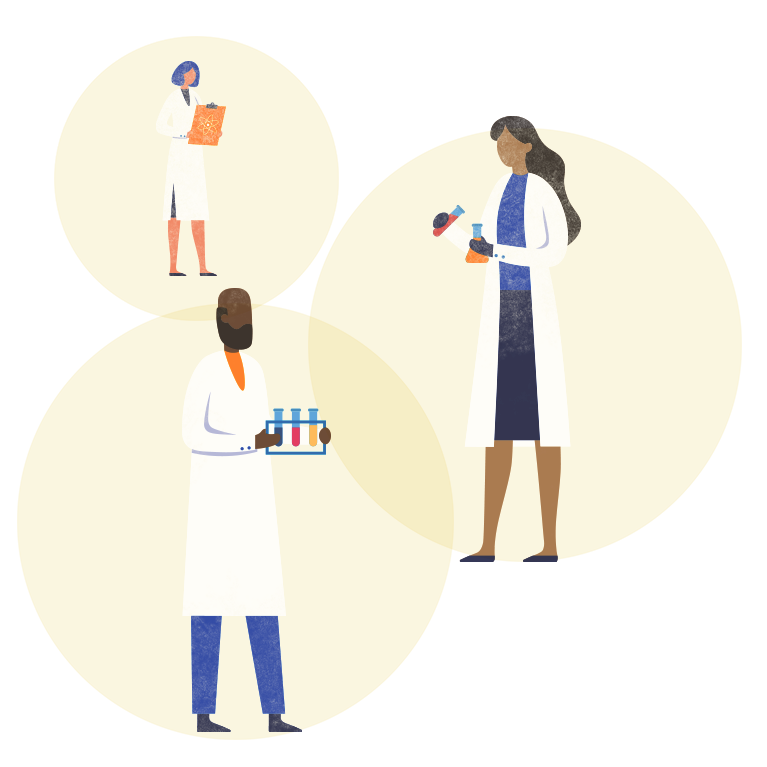
A vital part of ensuring safety is providing sufficient personal protective equipment to staff, despite shortages. Nicole Lack, senior director of Procurement Services, feels this issue keenly: “This situation has definitely had an impact on our supply chain for essential components like personal protective equipment and CO2, an element needed for many lab functions. We’ve had to respond quickly to uncertain supplies—looking for new suppliers or finding ways to ration items, for example—to help the Institute maximize safety while continuing critical experiments.”
In addition to adapting to the new reality on campus, the Institute established tools and protocols for remote work using collaboration platforms, such as Slack, and videoconferencing technologies, like GoToMeeting and Zoom.
“Obviously, working from home is a completely different experience than working in an office or lab,” says Rebecca Newman, VP of External Relations. “It presents a number of challenges that can take some adjustment. While everyone misses the physical energy of being on the campus, I am amazed at how quickly the Salk community has adapted to the use of all the technologies that can keep us connected and highly productive. There is a new appreciation and and understanding of colleagues’ roles across the Institute and a positive attitude that we are moving through this crisis together.”
Finding ways to transition from working at a lab bench to working remotely is a significant challenge for many researchers. But Salk scientists have risen to the occasion with creativity and resolve.

Above: The Wahl Lab collaborates virtually through a Zoom meeting work space during the COVID-19 pandemic.
Just as a few examples, Professor Geoffrey Wahl’s lab used time away from the lab to revise and submit paper revisions, write grants and hold virtual happy hours as well as a journal club to stay connected. Assistant Professor Dmitry Lyumkis’ lab implemented a “back-to-school” virtual program consisting of biweekly presentations on a research topic, journal club meetings, and a guest lecture on Fridays. Many labs have also focused on computational projects that can be done remotely, carrying out bioinformatics, image processing and algorithm design.
Professor Jan Karlseder, the Donald and Darlene Shiley Chair, says that many lab members continue to feel anxious about how the change in work space will impact their careers and their futures. “We’re trying to solve that by staying on top of everyone’s experiments. We’re talking about them; we’re discussing many papers as journal clubs, and we’re trying to plan out what we will do when research fully resumes,” he says.
To help early career researchers navigate the challenges of having their work disrupted, often while needing to take care of young children all day at home, Salk formed a Career Development Committee, led by Associate Professor Sreekanth (Shrek) Chalasani and Vice President for Equity and Inclusion Mallory Zaslav, to identify professional opportunities that can be conducted remotely. Click here for Perspective from a Postdoc feature.
During maintenance mode, the Institute planned for stages of ramp up in accordance with federal, state and local guidelines and in consultation with local and peer institutes across the country. In late May, Salk published a guidebook detailing operations for phased returns and in June, the Institute shifted from its maintenance mode to Phase 1 in conjunction with an ease of the statewide shutdown. Phase 1 entailed adding temperature checks to the Institute’s entry points; reconfiguring work spaces; and implementing shift work so that more research could safely continue, while still requiring staff to work remotely whenever possible.
Despite a gradual resumption of activities on campus, there is no return to “normal” anytime soon. All tasks that can be done off-site—such as writing papers or providing administrative support—will continue to be remote for the immediate future. Large gatherings and events have been moved to virtual platforms or postponed. Day-to-day lives, and research, have fundamentally changed for the time being, but Salk’s scientists continue to adapt and rise to the challenge.

“I hope this will remind us even more how important vaccines really are, and the essential role they play in public health. We have to look at vaccines at the population level, not the individual level, and realize they save lives.”
SUSAN KAECH
NOMIS CHAIR AND DIRECTOR OF SALK’S NOMIS CENTER FOR IMMUNOBIOLOGY AND MICROBIAL PATHOGENESIS
Tackling the novel coronavirus
Like scientists all over the world, Salk researchers are eager to contribute to efforts to put an end to this pandemic and prevent future ones. On March 24, the faculty Covid-19 Research Committee was created, chaired by Professor Janelle Ayres and composed of experts in immunology, infectious disease and virology, to identify and shape Salk’s research approach to COVID-19.
“Many Salk scientists were already conducting research that is highly relevant to COVID-19,” says Ayres, who holds the Helen McLoraine Developmental Chair.
Salk faculty whose research has direct relevance to COVID-19 include Ayres, who was already studying pneumonia and acute respiratory distress syndrome (ARDS, which occurs in COVID-19 patients); Kaech, who studies immunity to infections, including via vaccines; Greg Lemke, who studies receptors that regulate the immune response and prevent the “cytokine storms” that develop in COVID-19; Satchin Panda, who is studying long-term gene activity in COVID-19 patients; Marga Behrens, who is studying the effects of virus-induced maternal immune activation on brain development of offspring; Tony Hunter, whose discovery of molecular switches called tyrosine kinases led to anti-cancer drugs called tyrosine kinase inhibitors, several of which are in clinical trials for their ability to block activation of immune cells and potentially reduce ARDS; Dmitry Lyumkis, who investigates protein molecules made by viruses and how the insights inform the design of novel vaccines and antivirals; and others.
Ayres says the committee is especially looking for innovative proposals for science to address the pandemic that isn’t necessarily going to be done someplace else. “Researchers within the Salk Institute became really ignited by the pandemic; they want to make a difference, they want to contribute to the response, so they are developing diagnostics and performing fundamental research that is necessary for identifying candidate therapeutic targets,” she says. For details about new research projects approved by Salk’s COVID-19 Research Committee, click here.
A vaccine against the virus that causes COVID-19 is likely many months away, but the disease is a powerful reminder of the importance of fundamental biological research, which seeks to understand at a basic level how living things function.
The research that goes on at Salk every day—bringing about new understandings in infectious disease, cancer, aging, metabolism, neuroscience, plant biology and more—is a kind of insurance policy against future health threats, both known and unknown. Jonas Salk did not develop the polio vaccine out of the blue in 1955; for many years before he developed his vaccine, Salk had been studying the influenza virus. It was the critical insights he gained by developing a vaccine for influenza that later allowed him to conquer polio: by 1979, polio had been eradicated in the United States.
“Vaccines have proven to be one of the very best approaches to save lives and improve human health. They have been so effective that the threats they prevent no longer feel like threats,” says Assistant Professor Edward Stites, who in addition to being a cancer researcher is also a physician. “Polio is a great and highly relevant example. Once there is a COVID-19 vaccine, it will be a phenomenal tool to control this new threat, and hopefully that will re-instill a widespread commitment to vaccination compliance.”
Kaech adds, “I hope this will remind us even more how important vaccines really are, and the essential role they play in public health. We have to look at vaccines at the population level, not the individual level, and realize they save lives. Sadly, I think some people have forgotten this because we haven’t had anything threaten our society globally, quite like this, in the past 40 or so years, like polio and smallpox once did.”
Despite the challenges of the pandemic, everyone at Salk has expressed appreciation for the way people have pulled together to continue groundbreaking research as well as pursue ways to tackle the coronavirus. Once it is safe to do so, the Institute will also bring back its highly anticipated scientific and public events, including the annual Symphony at Salk.
“We look forward to the day when scientists, staff and visitors can all return to our iconic campus,” says Gage. “We are confident that scientific endeavors across the world will help mitigate this public health crisis and prevent further tragedies.”
[ssba]
Support a legacy where cures begin.
Featured Stories
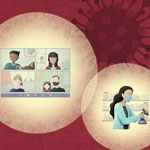 Apart but togetherAs COVID-19 spreads across the world, organizations like the Salk Institute have mobilized to respond. In this feature article, read about how the Institute is adapting and continuing its groundbreaking science.
Apart but togetherAs COVID-19 spreads across the world, organizations like the Salk Institute have mobilized to respond. In this feature article, read about how the Institute is adapting and continuing its groundbreaking science.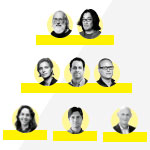 New COVID-19 research projectsIn addition to Salk’s ongoing research areas relevant to COVID-19, several new coronavirus-specific projects have recently launched. These innovative projects range from understanding the structure of the virus to mobilizing the body’s immune reaction.
New COVID-19 research projectsIn addition to Salk’s ongoing research areas relevant to COVID-19, several new coronavirus-specific projects have recently launched. These innovative projects range from understanding the structure of the virus to mobilizing the body’s immune reaction.
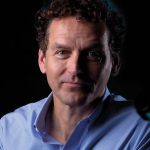 A conversation with Martin HetzerIn the last few months, Salk Vice President and Chief Science Officer Martin Hetzer spearheaded the Institute’s efforts to respond to the pandemic from both an administrative as well as a scientific perspective.
A conversation with Martin HetzerIn the last few months, Salk Vice President and Chief Science Officer Martin Hetzer spearheaded the Institute’s efforts to respond to the pandemic from both an administrative as well as a scientific perspective.
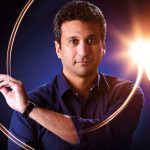 Eiman Azim – Decoding dexterityIn this Q&A, Assistant Professor Eiman Azim shares his thoughts on what’s next in neuroscience, how all scientists are philosophers and what he learned about movement from observing his newborn.
Eiman Azim – Decoding dexterityIn this Q&A, Assistant Professor Eiman Azim shares his thoughts on what’s next in neuroscience, how all scientists are philosophers and what he learned about movement from observing his newborn.
 Nasun Hah – Next gen sequencingAs the director of the Next Generation Sequencing Core, Staff Scientist Nasun Hah collaborates with everyone from plant biologists to neuroscientists to provide support and information about sequencing genes and entire genomes.
Nasun Hah – Next gen sequencingAs the director of the Next Generation Sequencing Core, Staff Scientist Nasun Hah collaborates with everyone from plant biologists to neuroscientists to provide support and information about sequencing genes and entire genomes.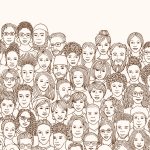 Update on initiatives to support diversity and BIPOCLearn about the Institute’s commitment to and actions around diversity and inclusion.
Update on initiatives to support diversity and BIPOCLearn about the Institute’s commitment to and actions around diversity and inclusion. Molly MattyMolly Matty, a postdoctoral researcher in the lab of Associate Professor Shrek Chalasani, shares what worms can teach us about human behavior, why science outreach is so important and why she enjoys puns.
Molly MattyMolly Matty, a postdoctoral researcher in the lab of Associate Professor Shrek Chalasani, shares what worms can teach us about human behavior, why science outreach is so important and why she enjoys puns.




















































